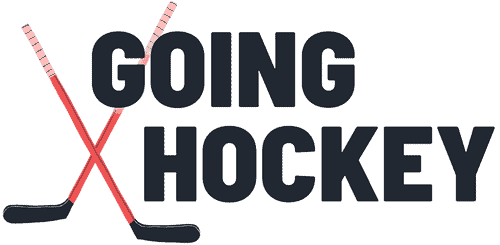In the world of hockey, the composition of a team, its roles, and its dynamic interplay are brought to light by answering the fundamental question:
How many players are on a hockey team?
In the NHL, there are a total of 23 players are allowed on a hockey team. Of those 23 players, twenty of them are allowed to dress up for any given hockey game.
Amature hockey teams are comprised of anywhere between 8~20 players.
How Many Players On An NHL Team?
NHL teams are allowed to have the following number of players:
- 20 players on their game-day roster.
- 23 players on their active roster.
- 50 pro players under contract.
- 80 players on their reserve list.
So, in any given NHL game, there are 20 players who are dressed up. This is comprised of two goalies and eighteen skaters.
There will be an additional 3 players who are “healthy scratches”, watching the game from the stands.
Together they comprise the 23-man active roster. The active roster is important for playoff purposes.
The active roster is (mostly) set in stone at the trade deadline every year, just before the playoffs. After the trade deadline, NHL teams cannot edit their active roster (some exceptions apply).
In total, each NHL organization is allowed the rights to 80 hockey players. Of those 80 players, no more than 50 can be pro players.
Reserve List Explained
In the NHL, the reserve list is the list of all the hockey players belonging to the organization.
It is comprised of the following:
- Professional players (up to 50 players in total).
- Junior prospects (players with less than 11 professional games).
- Draft picks who have not yet signed contracts.
NHL Trade Deadline Explained
The NHL trade deadline is the day when the 23-man, active roster is set in stone.
This happens on the “40th day, before the final day of the regular season”, which usually ends up being sometime in early March.
Organizations can still trade players after the trade deadline, but they will not be allowed to participate in the remainder of the regular season or the playoffs.
There are exceptions to the deadline such as the return of players from a club’s Long Term Injured Reserves (LTIR).
In 2021, the Tampa Bay Lightning famously used the LTIR return clause, in conjunction with the absence of a salary cap in the playoffs, to reactivate star player Nikita Kucherov from LTIR to their already cap-maxed, 23-man roster. They did this just in time for round 1 of the playoffs.
The Lightning went on to win the Cup that year.
What Does A Healthy Scratch Mean?
A healthy scratch is any hockey player who is on a team’s active roster but does not dress up or play in the actual game itself.
For example, in the NHL, there are 23 players on a team’s “active roster”. Of these 23 players, only 20 are allowed to dress up and play in the game.
In other words, in every game, 3 players do not dress up or play. They instead watch from the stands – healthy scratches.
How Many Hockey Players Are On The Ice?
The minimum number of hockey players allowed on the ice is 8. The maximum number of hockey players allowed on the ice is 12.
In most cases, there are a total of 12 hockey players on the ice, consisting of 2 goalies and 10 skaters, split between two teams.
However, there are caveats to this, such as penalty kills, pulled goalies, and regular season overtime.
At the very minimum, there must be 8 total players on the ice.
Even Strength
At even strength, there are 12 total hockey players on the ice
There are six players on each team, consisting of one goalie, two defensemen, and three forwards.
Powerplays and Penalty Kills
Powerplays and penalty kills can bring the total number of skaters on the ice down to a minimum of 8. However, most powerplays will consist of 5 skaters vs 4 skaters – a total of 9.
It’s relevant to note that goalies never serve their own penalties, unless they get ejected.
So, the number of goalies always remains two – one on each team. This is, of course, unless the goalie is pulled (substituted) to add an extra skater to the ice.
These are all of the possible combinations of skaters on the ice during powerplay and penalty kills:
- 5 on 4
- 5 on 3
- 4 on 4
- 4 on 3
- 3 on 3
- 6 on 4
- 6 on 3
So, at the very minimum, there are 3 skaters on each team, plus 2 goalies – a total of 8.
3 on 3 Overtime
3 on 3 overtime was introduced to the NHL in 2015, and it’s exactly what it sounds like.
During 3 on 3 overtime, there are a total of 3 skaters on each team, plus 1 goalie per side, for a total of 8 players.
This configuration of overtime is, however, only for the regular season. In the playoffs, teams play a normal, 5 on 5 overtime.
Pulled Goalie
A rare instance when there are more than 10 skaters on the ice is when the goalie is pulled.
In hockey, teams are allowed to swap their goalie out for an extra skater. In most cases, this results in a 6 on 5 situation.
Pulling the goalie has the obvious disadvantage of leaving the net wide open but also has the advantage of having an extra skater on the ice.
How Many Players Make A Team In Hockey?
In the NHL, 23 total players can make a team – this is known as the “active roster.”
However, the active roster is subject to change throughout the season, at least until the trade deadline.
This means that any player who has “made” the team can “un-make” the team at any point up until the trade deadline.


Leave a Reply